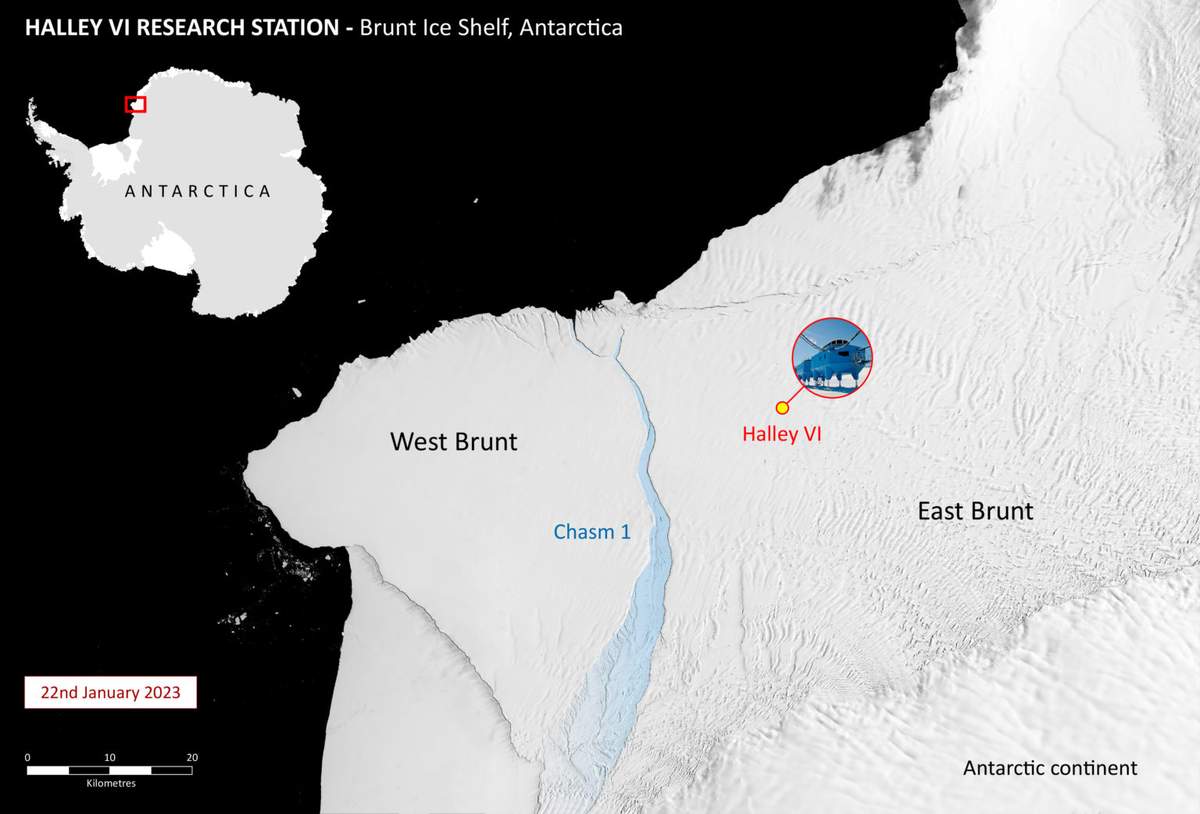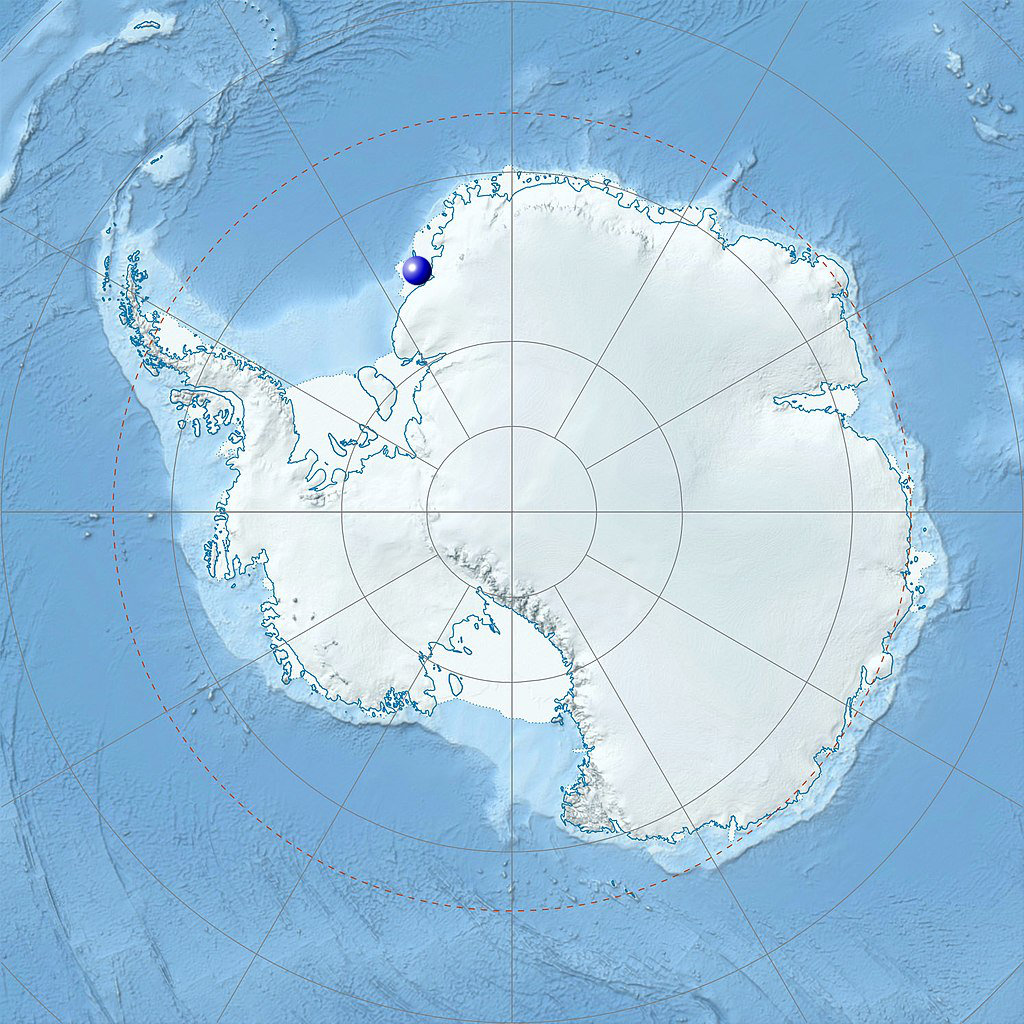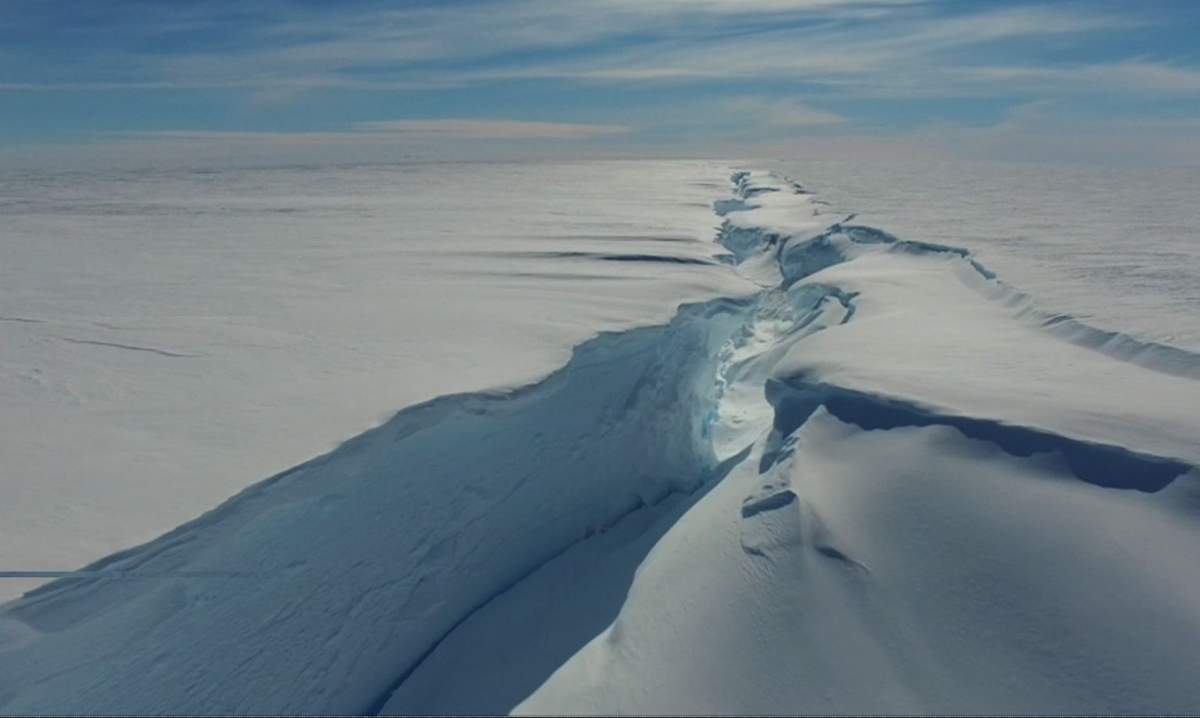Brunt Ice Shelf, Antarctica —(Map)
On January 22, a massive iceberg broke off from Antarctica’s Brunt Ice Shelf. Scientists say the iceberg was expected to break off and the event isn’t connected to climate change. But the size of the iceberg is hard to imagine.
The iceberg, known as “A81” is extremely large. It covers an area of about 600 square miles (1,550 square kilometers). That’s about twice the size of New York City, or roughly the size of London. The iceberg is about 500 feet (152 meters) thick.
Though Antarctica has been losing a lot of ice in recent years because of climate change, this event is normal and isn’t connected to the climate crisis.

(Source: British Antarctic Survey .)
Antarctica, the world’s fifth largest continent, is covered with a layer of ice and snow that’s roughly 1.2 miles (1.9 kilometers) thick. As snow falls, it piles up in the center of Antarctica in a huge layer of ice. Over time, the weight of this ice and snow creates slowly moving rivers of ice called glaciers, which push out toward the sea.
When the glaciers reach the sea, they slowly push out beyond the edge of the land, forming huge “ice shelves”. These are massive sections of ice that spread out over the sea, floating on the water below. Antarctica’s largest ice shelf, the Ross Ice Shelf, is about the size of France.
From time to time, the edges of the ice shelves break off. This is a natural process, called “calving”. Though calving events are a normal part of the ice shelf in Antarctica, one expert describe huge calving events like this one as “spectacular”.

(Source: Alexrk2 [CC BY-SA 3.0], via Wikimedia Commons.)
The crack in the Brunt Ice Shelf that led to this calving was known as “Chasm-1”, and it had been quiet since the late 1970s. But around 2012, Chasm-1 began shifting again. In 2016, the United Kingdom moved its Halley VI Research Station farther away from Chasm-1.
On January 22, Chasm-1 spread all the way across the ice shelf, breaking free the massive chunk of ice known as A81. The research station wasn’t affected.
This is the second time in two years that a huge iceberg has calved from the Brunt Ice Shelf. In 2021, an iceberg called A74 broke off. It was slightly smaller than A81.
After it broke free, A74 drifted into the Weddell Sea. Scientists believe A81 will probably follow the same path.

(Source: British Antarctic Survey .)
Though the calving of A81 didn’t have anything to do with the climate crisis, the world’s rising temperatures are definitely affecting Antarctica’s sea ice.
Unlike an ice shelf, sea ice isn’t attached to Antarctica’s land. It’s a layer of ice that floats on the surface of the sea. The sea ice is there year-round. It grows larger in the cold winters, and smaller as it begins to melt in the summers.
It’s now summer in Antarctica, and scientists say the sea ice is disappearing “unusually” rapidly. Last year, with temperatures warmer than normal, Antarctica set a record for the lowest amount of sea ice ever recorded.
Scientists say Antarctica’s sea ice could set a new record low again this year.
😕
This map has not been loaded because of your cookie choices. To view the content, you can accept 'Non-necessary' cookies.
